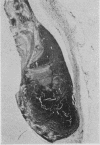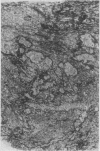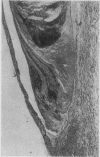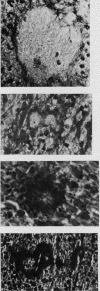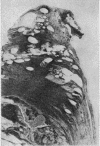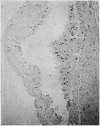Abstract
The structure of 50 small thrombi in femoral valve pockets and the microscopic contents of 35 apparently empty pockets were studied in an attempt to ascertain the nature of the microscopic nidi from which thrombi form and their manner of growth to visible thrombi. Sixteen thrombi had little or no cellular invasion. Most of these recent structures had two main regions, red areas restricted distally in the pocket by the vein wall, and larger white regions comprising most of the thrombus length and often covering the red areas. Red areas are the early sites of cellular adhesion and invasion and the likely sites of origin of most thrombi. They were usually dominated by red cells and fibrin. White zones, which represent propagation growth, are characterized by many foci of platelets with fibrin borders (platelet-fibrin units). Some red areas also contained platelet-fibrin units but they were few and tiny; platelets were not seen in others and one small wholly red thrombus was devoid of platelets. Degenerative changes in platelet-fibrin units were observed, and it is postulated that many become purely fibrin structures. There was no significant evidence of preceding intimal damage in the vein wall. Therefore nidi are laid down on normal endothelium probably on the vein wall near the apex of the pocket. Some pockets, empty of thrombi, contained condensed foci of red cells or tiny fibrin fragments surfaced by endothelial cells and considered to be the remnants of aborted thrombi; a few contained clumps of platelets or leucocytes. It is postulated that any of these may represent the nidi from which thrombi grow. Several thrombi also incorporated large fat droplets, numerous in two. Fat embolic globules derived from fractures are their likely source.
Full text
PDF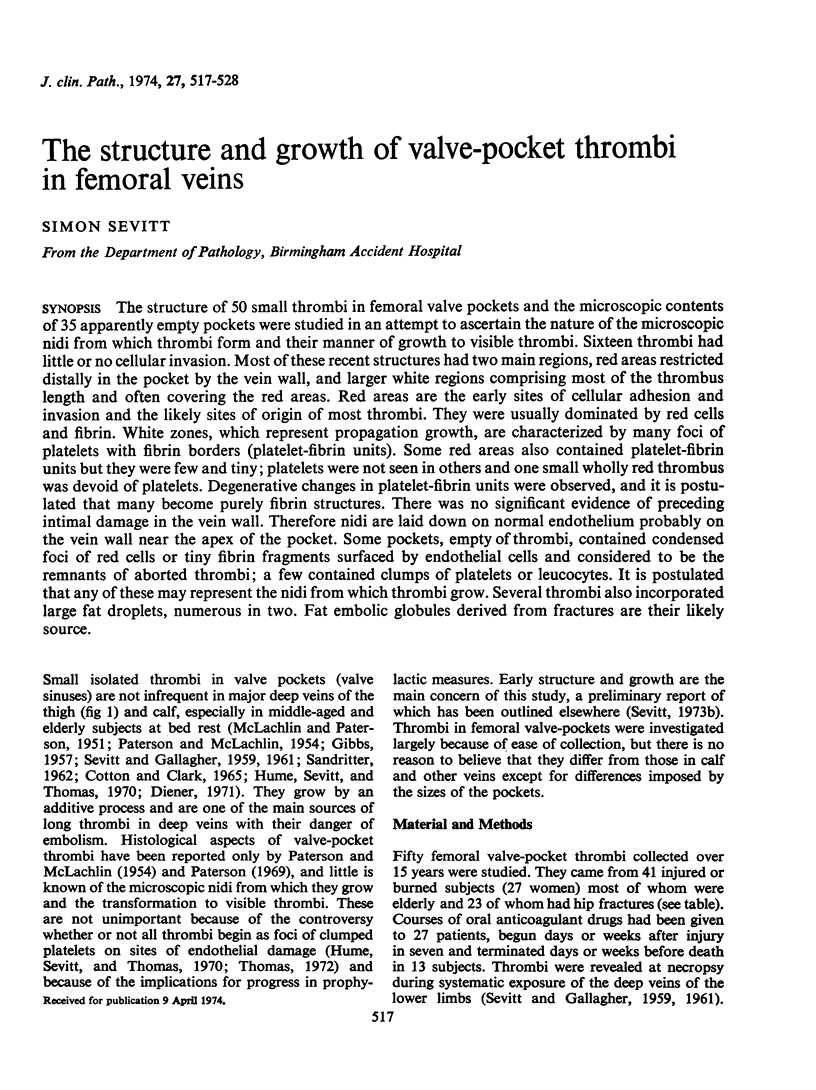
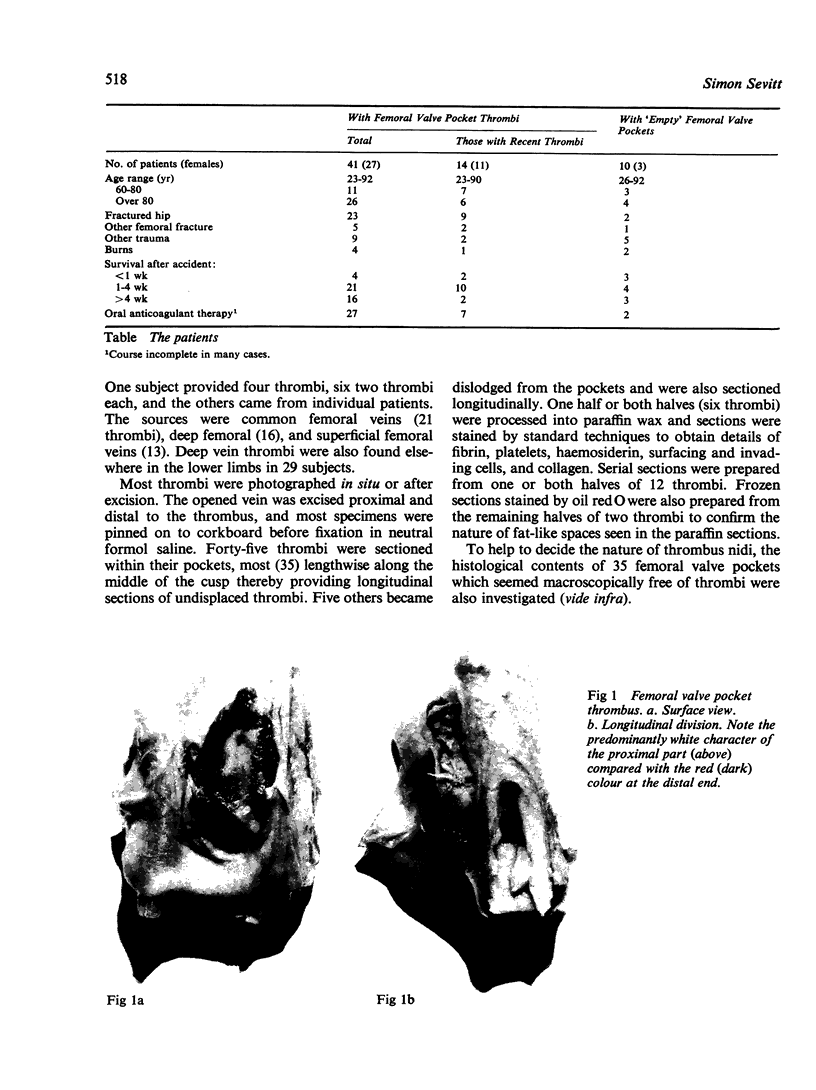
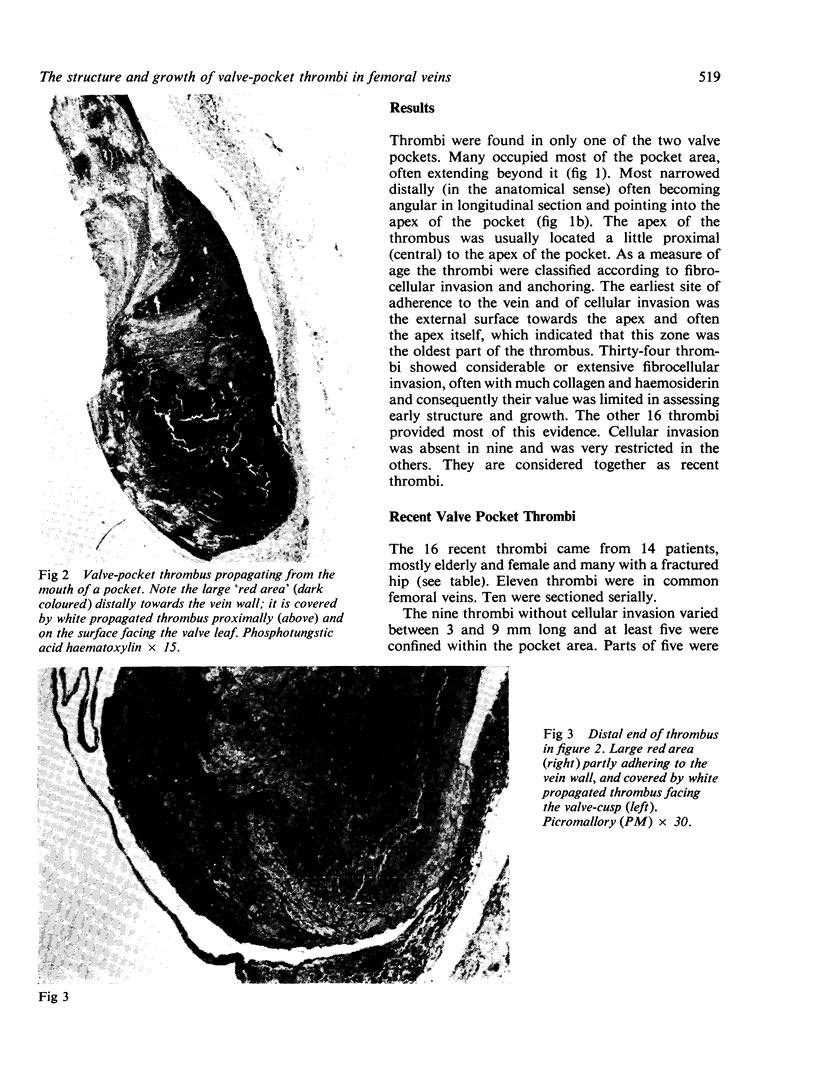
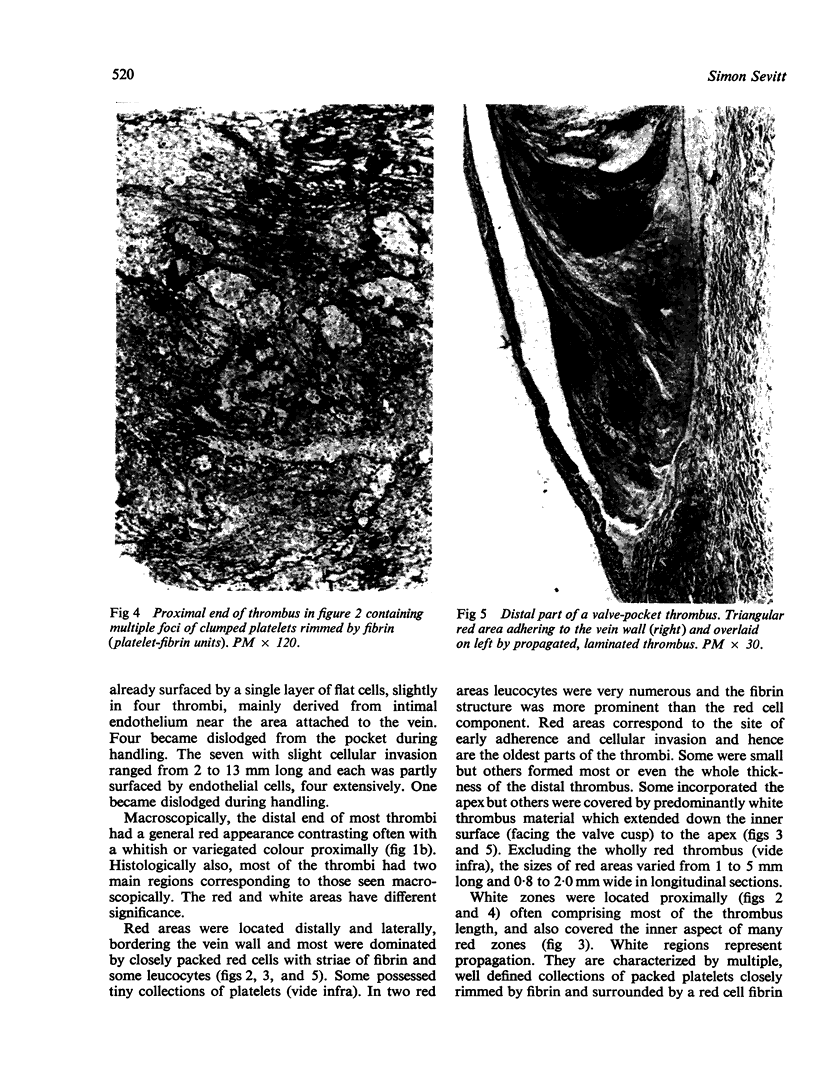

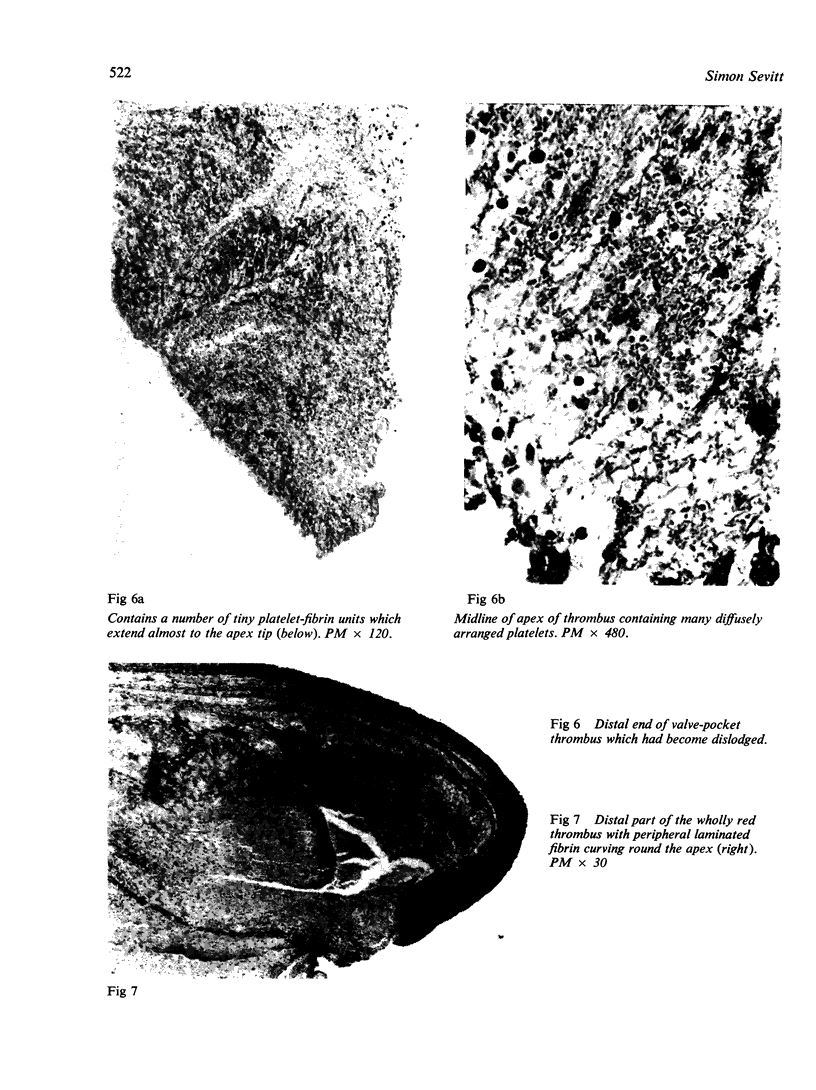
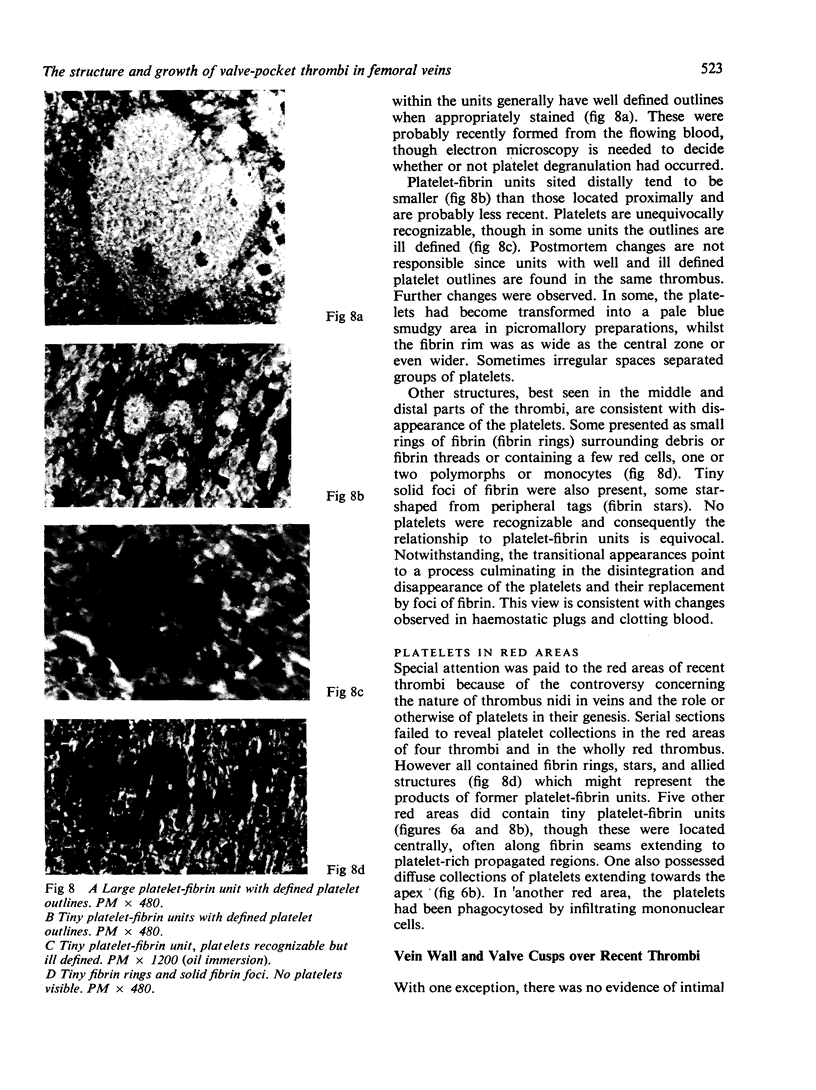
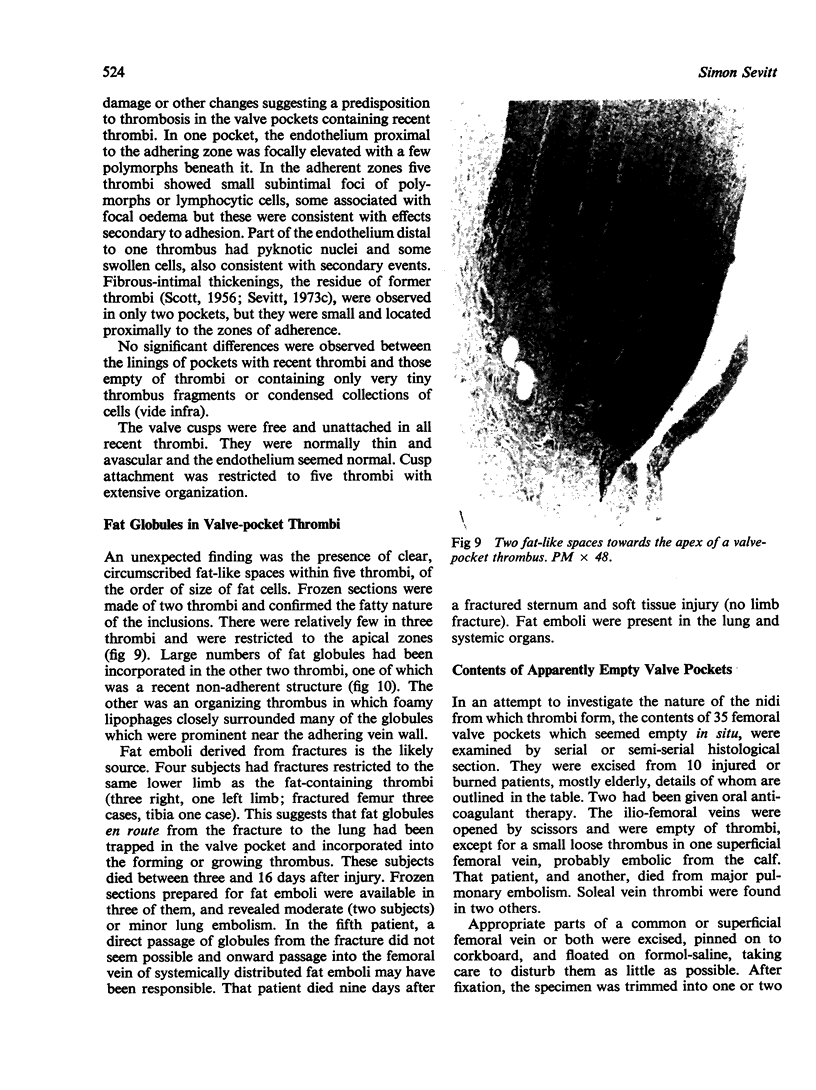
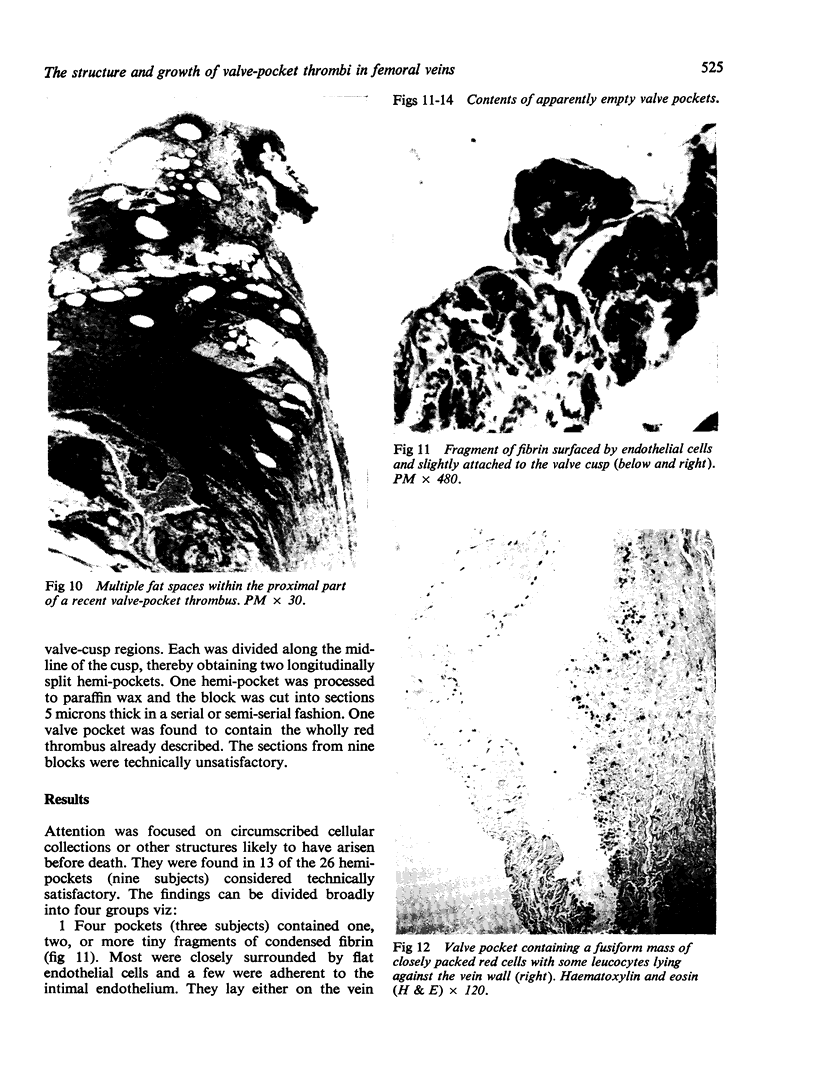
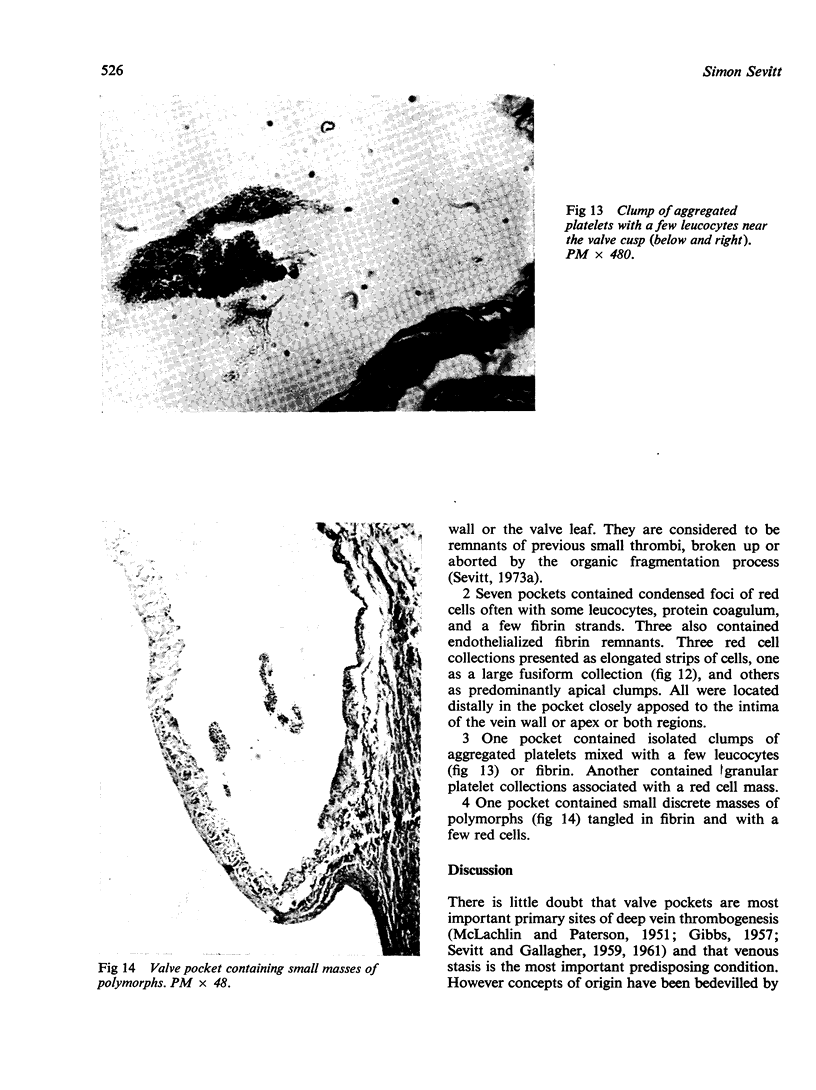
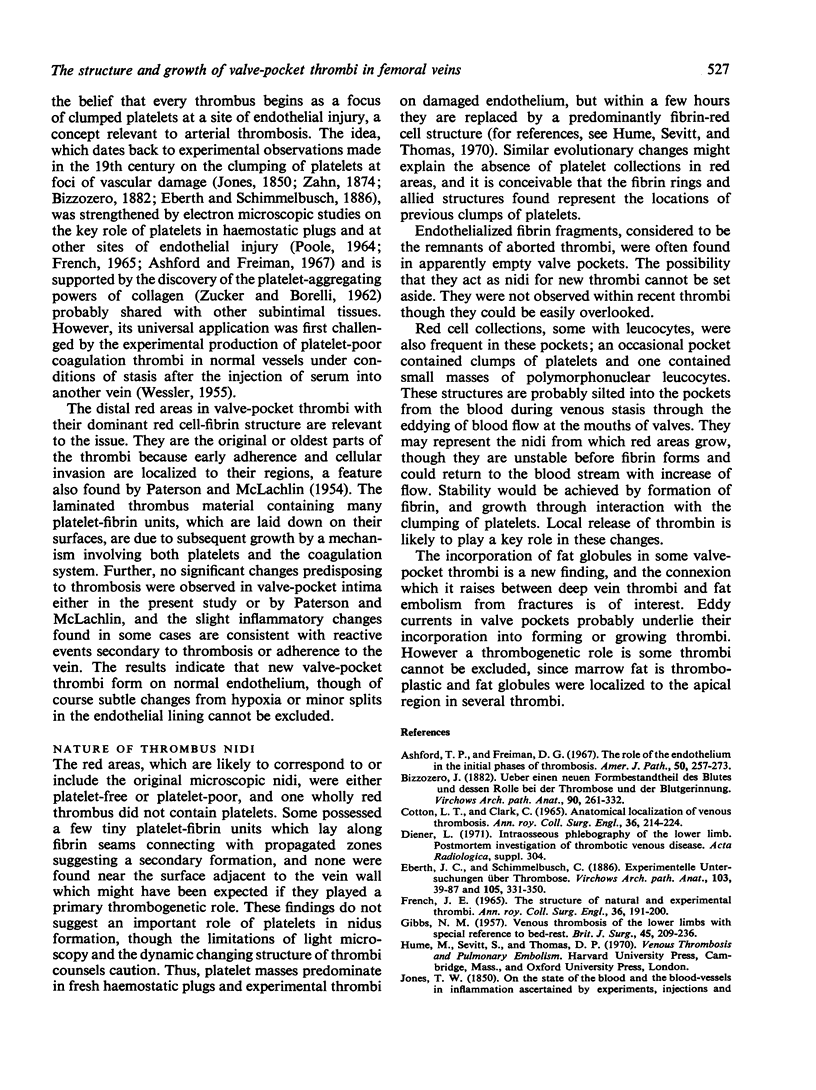
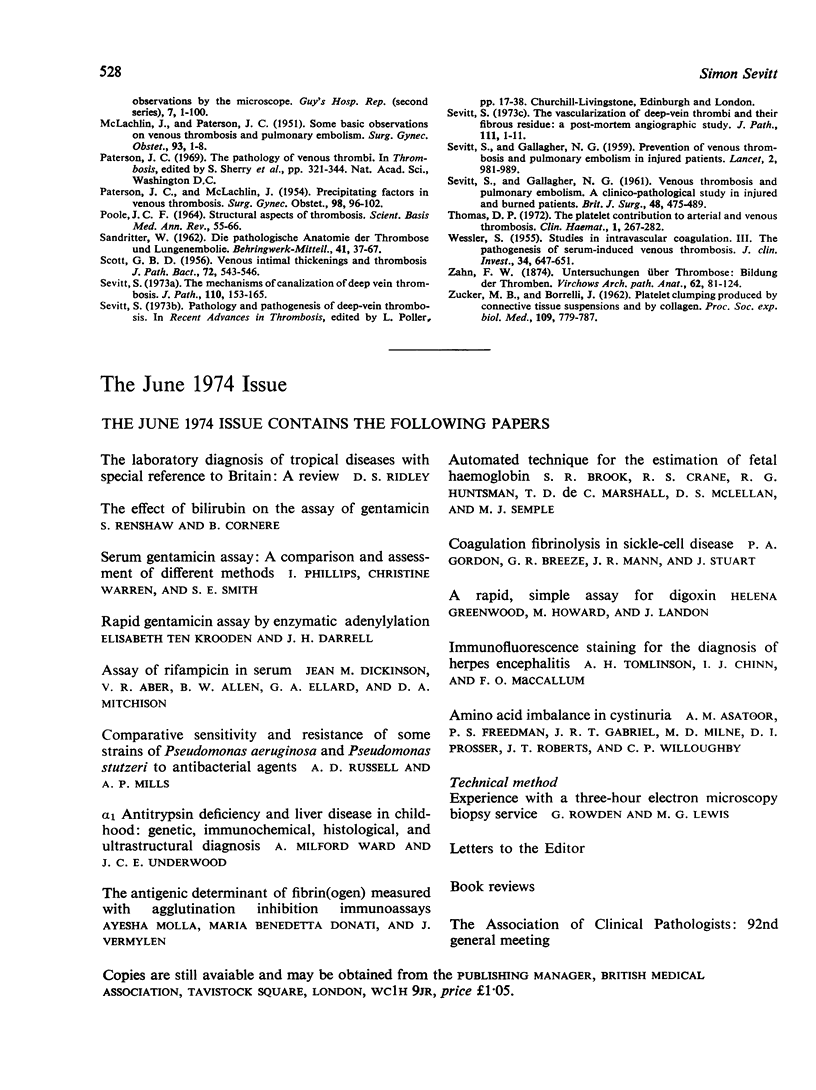
Images in this article
Selected References
These references are in PubMed. This may not be the complete list of references from this article.
- Ashford T. P., Frieiman D. G. The role of the endothelium in the initial phases of thrombosis. An electron microscopic study. Am J Pathol. 1967 Feb;50(2):257–273. [PMC free article] [PubMed] [Google Scholar]
- COTTON L. T., CLARK C. ANATOMICAL LOCALIZATION OF VENOUS THROMBOSIS. Ann R Coll Surg Engl. 1965 Apr;36:214–224. [PMC free article] [PubMed] [Google Scholar]
- FRENCH J. E. THE STRUCTURE OF NATURAL AND EXPERIMENTAL THROMBI. Ann R Coll Surg Engl. 1965 Apr;36:191–200. [PMC free article] [PubMed] [Google Scholar]
- GIBBS N. M. Venous thrombosis of the lower limbs with particular reference to bed-rest. Br J Surg. 1957 Nov;45(191):209–236. doi: 10.1002/bjs.18004519102. [DOI] [PubMed] [Google Scholar]
- McLACHLIN J., PATERSON J. C. Some basic observations on venous thrombosis and pulmonary embolism. Surg Gynecol Obstet. 1951 Jul;93(1):1–8. [PubMed] [Google Scholar]
- PATERSON J. C., McLACHLIN J. Precipitating factors in venous thrombosis. Surg Gynecol Obstet. 1954 Jan;98(1):96–102. [PubMed] [Google Scholar]
- Poole J. C. Structural aspects of thrombosis. Sci Basis Med Annu Rev. 1964:55–66. [PubMed] [Google Scholar]
- SEVITT S., GALLAGHER N. G. Prevention of venous thrombosis and pulmonary embolism in injured patients. A trial of anticoagulant prophylaxis with phenindione in middle-aged and elderly patients with fractured necks of femur. Lancet. 1959 Dec 5;2(7110):981–989. doi: 10.1016/s0140-6736(59)91464-3. [DOI] [PubMed] [Google Scholar]
- SEVITT S., GALLAGHER N. Venous thrombosis and pulmonary embolism. A clinico-pathological study in injured and burned patients. Br J Surg. 1961 Mar;48:475–489. doi: 10.1002/bjs.18004821103. [DOI] [PubMed] [Google Scholar]
- Sevitt S. The mechanisms of canalisation in deep vein thrombosis. J Pathol. 1973 Jun;110(2):153–165. doi: 10.1002/path.1711100207. [DOI] [PubMed] [Google Scholar]
- Sevitt S. The vascularisation of deep-vein thrombi and their fibrous residue: a post mortem angio-graphic study. J Pathol. 1973 Sep;111(1):1–11. doi: 10.1002/path.1711110102. [DOI] [PubMed] [Google Scholar]
- WESSLER S. Studies in intravascular coagulation. III. The pathogenesis of serum-induced venous thrombosis. J Clin Invest. 1955 Apr;34(4):647–651. doi: 10.1172/JCI103114. [DOI] [PMC free article] [PubMed] [Google Scholar]




